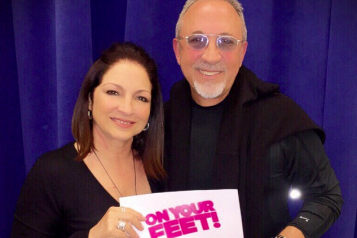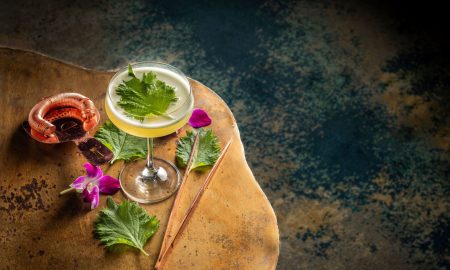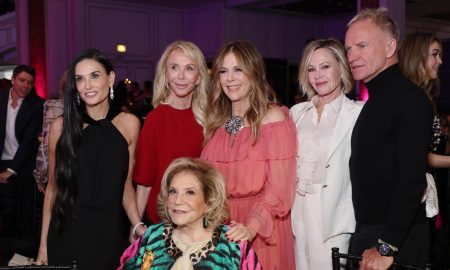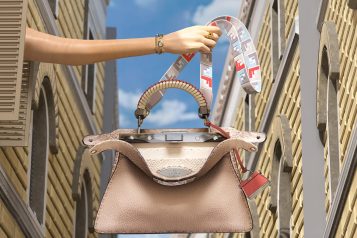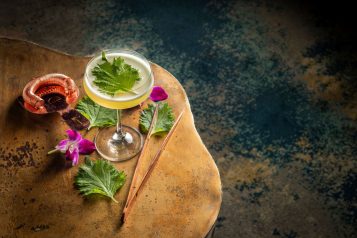Professional Czech tennis player Lucie Šafárová doubles partner extends a bowl of berries to her. Instead of taking them she swats them away, knocking them to the ground. She repeatedly gets her on-camera interviewer’s name wrong and makes her coach, Rob Steckley cower in fear. No, this isn’t the real Lucie, but a scene in a playful Vimeo video trying to turn Šafárová’s reputation as the nicest player in women’s tennis on its ear.
There are a series of such videos taken by Steckley on his iPhone with the hashtag #teamsafarova, which have been getting more and more traffic as Lucie’s ranking rises. The concept of having a team is comforting for Lucie, who, like most professional tennis players, is a solo entity, rising and falling on her own strength. “It’s a kind of lonely world for us,” says Šafárová from her training camp in the Czech Republic, where she stays when she’s not on the roadcompeting in more than 20 tournaments a year. Despite having earned over $7 million in prize money, sponsorships from Nike and Wilson, and a number six world ranking, professional tennis means losing—a lot.
“Something I’ve really wanted to do is spread posi- tivity in the sport,” she says. “There are 118 players coming to every tournament, and only one person wins. That’s kind of hard because even great players lose every week. I hate to see the disappointed faces in the locker room, people sad and crying.” Interestingly enough, if she ever managed to succeed, she’d probably be helping her competition. Because one of the tricks that has helped this 12-year veteran finally crack the top 10 is being happy and relaxed.
“One of the things I do now, which I didn’t really do before, was just enjoy the sport. I love tennis itself, and even though it’s challenging, at the end of the day, it’s just tennis and it should bring you happiness.” She also credits the help of coach Steckley, who she began working with in 2012, with helping her break out of the 30s, a rank she was seemingly stuck at for a few years. “He helped me calm down a lot, and of course, we’ve worked on a little technique here and there.” For Šafárová, it sounds like everything finally just gelled.
“It’s a combination of learning bits and pieces from ev- eryone I’ve worked with, and really figuring out how to handle your own doubts and fears,” she explains. “It took me 10 years to reach my potential and really break into the top 10. It’s funny because now people say, ‘What took you so long? You could have always been here!’ but I just needed time,” says Šafárová. “The top 50 tennis players in the world all have the physical abil- ity to win, at that point it’s just about your head.”
Winning matches against top players doesn’t hurt ei- ther. At the 2015 Australian Open, she won the doubles competition partnering with American Bethanie Mat- tek-Sands. Later, at the 2015 French Open, Šafárová de- feated Maria Sharapova, giving the number two player her earliest loss at the tournament since 2010. While she didn’t bring home the singles cup, after losing the final match to Serena Williams, she did win the doubles competition with Bethanie Mattek-Sands to clinch her first Grand Slam title. All this winning naturally sets the media abuzz, as they suss out the sports next breakout star.
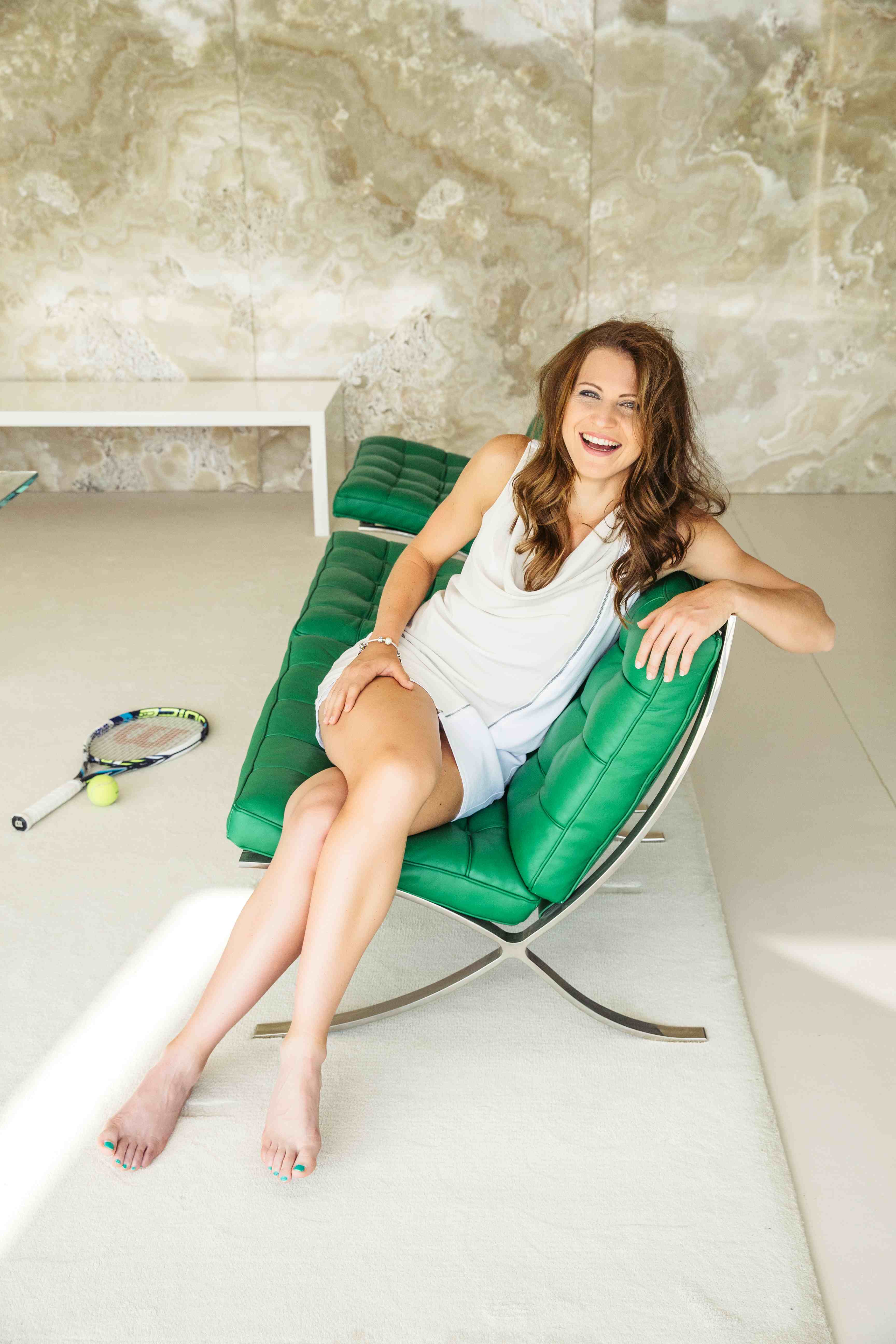
Šafárová’s story isn’t totally unlike Serena’s, in that she grew up playing tennis to follow in the footsteps of her sister who competed and got a scholarship to Univer- sity of Southern California. She started playing tennis at an early age with her father, who just happened to play regularly with her first professional coach. When she was nine, she became part of the Czech tennis association and was able to train at one of the country’s big tennis centers. By age 14, she moved in full-time to focus all her efforts on the game. She never completely left. “I still have an apartment there where I can go practice in my off time.”
Indeed, Šafárová is something of a national treasure in Czech Republic, where she is sponsored by the electric company. She was the first Czech woman to make it to the French Open Finals in 34 years, where she handily beat Serbian player Ana Ivanovic. Šafárová was so jubilant; she rolled on the red clay courts happily covering herself in red victory dust. She recalls the event as a “great win, great match and very satisfying.”
Unfortunately, she wasn’t able to stave off Serena Williams to win the Open, even though it was reported that Williams was suffering from the flu. “I heard she was sick, but she was still playing amazingly. I wouldn’t call her sick because she was moving normally and hitting the ball perfectly well when we played.” How truly sick Williams was by the time she played Šafárová remains to be seen, but if she won the tournament with a flu, it would be miraculous. “When I first started playing, the conventional wisdom was that if you didn’t feel well, you could still survive until the quarter finals, but that’s not the case anymore. The competition is very strong now and you have to be ready from the first round. You see even top players losing in the first round because of the fierce competition.”
At age 28, it’s now or never for Šafárová to shine. Her coach, Rob Steckley says play- ers mature at different rates. “It’s been a gradual process, I’ve watched her develop over the last six years and become the full player she is right now. There hasn’t been a better time than than now,” he says. In addition to her evolution on the court, her coach has helped her evolve personally too. “I used to be very shy, but with these videos Rob helped me. At first I didn’t want to act in them, but now I have fun, it’s enjoyable and we have a lot of laughs when we do them,” she says.
You wouldn’t know by looking at her, but another thing the player really enjoys is baking—specifically apple strudel. “I really like fruit cakes. If I’m going to cheat, it’s always with those cakes. With so many hours training, I can afford to cheat a little bit.” While Šafárová is on the road, she always makes sure to visit independent coffee shops, one of which she hopes to own one day and just maybe sell her apple strudel.
Photography Jan Zatorsky – Mafra & Pavel Lebeda








